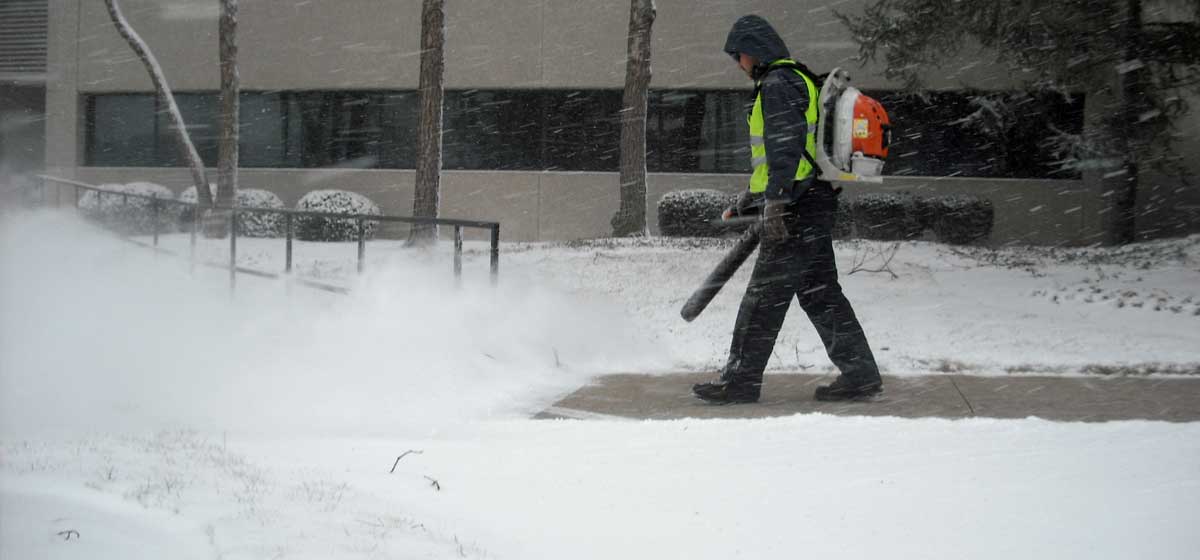 Last winter was one for the record books and although you’d probably like to forget it, winter is scheduled to arrive at the same time this year as it did last.The Old Farmer’s Almanac just released its predictions for the 2015-2016 winter and it’s forecasting a winter even worse than last year. Are you and your snow removal contractor ready? Here are some things to consider as you work on your snow plan for this year.
Last winter was one for the record books and although you’d probably like to forget it, winter is scheduled to arrive at the same time this year as it did last.The Old Farmer’s Almanac just released its predictions for the 2015-2016 winter and it’s forecasting a winter even worse than last year. Are you and your snow removal contractor ready? Here are some things to consider as you work on your snow plan for this year.
Planning & Preparation
- Start now. Successful snow removal and de-icing requires an enormous amount of planning. Whether it’s procuring materials, equipment allocation, inspecting sites for hazards or identifying snow storage areas, this must be done before the snow starts falling.
- Who’s monitoring the weather? Weather changes fast and variances in ground temperature, precipitation type, and accumulation vary significantly from one location to another. Successful snow removal requires that your contractor be ahead of the weather.
- Have a scout. Successful snow removal requires that someone monitors conditions when there is a forecast for precipitation and when cold temperatures could freeze standing water. That means someone needs to be on site even when there is no snow to push. Is this included in your service or are you responsible for monitoring site conditions?
- Decide who authorizes service. Is there a contact within your company that authorizes service or is the contractor provided defined “trigger points”? Indecision here can cost valuable time during a snow event.
Materials, Equipment, and Pricing
- Use the right product. All de-icing products are corrosive. Don’t let anyone convince you otherwise. At the same time, not all products are created equal and there are varying degrees of corrosiveness. Choose the right product for your surfaces and your budget.
- How’s your inventory? Private contractors purchase less than 5% of country’s salt products. With such a small piece of the commodity market, they are the first ones to be “cut off” by suppliers during salt shortages or periods of bad weather. Do you or your snow contractor have the ability to purchase and store (in an environmentally correct manner) the de-icing inventory you need for the season?
- Right tool for the job. Plow trucks are not the only tool needed in a snow fighter’s tool box. Large parking lots often require specialized snow pushers and large capacity salt spreaders. Equally, small parking lots, patios, and lengthy sidewalks can’t always be shoveled.
Insurance and Risk Management

- Are you covered? Be sure your snow contractor carries adequate insurance and be certain they have defined how property damage will be handled. If someone tells you, “Don’t worry. We won’t damage anything,” they don’t have much plowing experience. When you start scraping parking lots in the middle of the night, with 8-12’ metal blades, being propelled by equipment that weighs several tons, something can easily go wrong. Your contractor should have a plan to fix it.
- Response Time Counts. The most common way to price snow removal in Lexington and Louisville is Time and Materials. The problem with this pricing model is that it doesn’t require a contractor to assess the amount of time required to complete a job. Be sure your property is not one of many on a list of properties that get T&M service. It may be snowing before your vendor realizes it’s going to take 19 hours to make it through their route.
Note: Want to see some snow removal in action? Check out our You Tube Channel.



